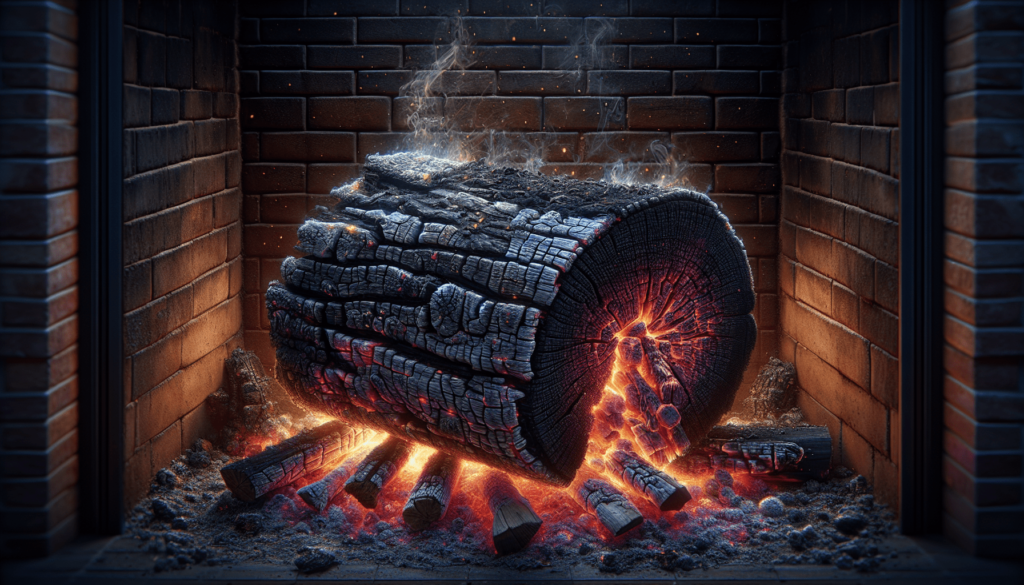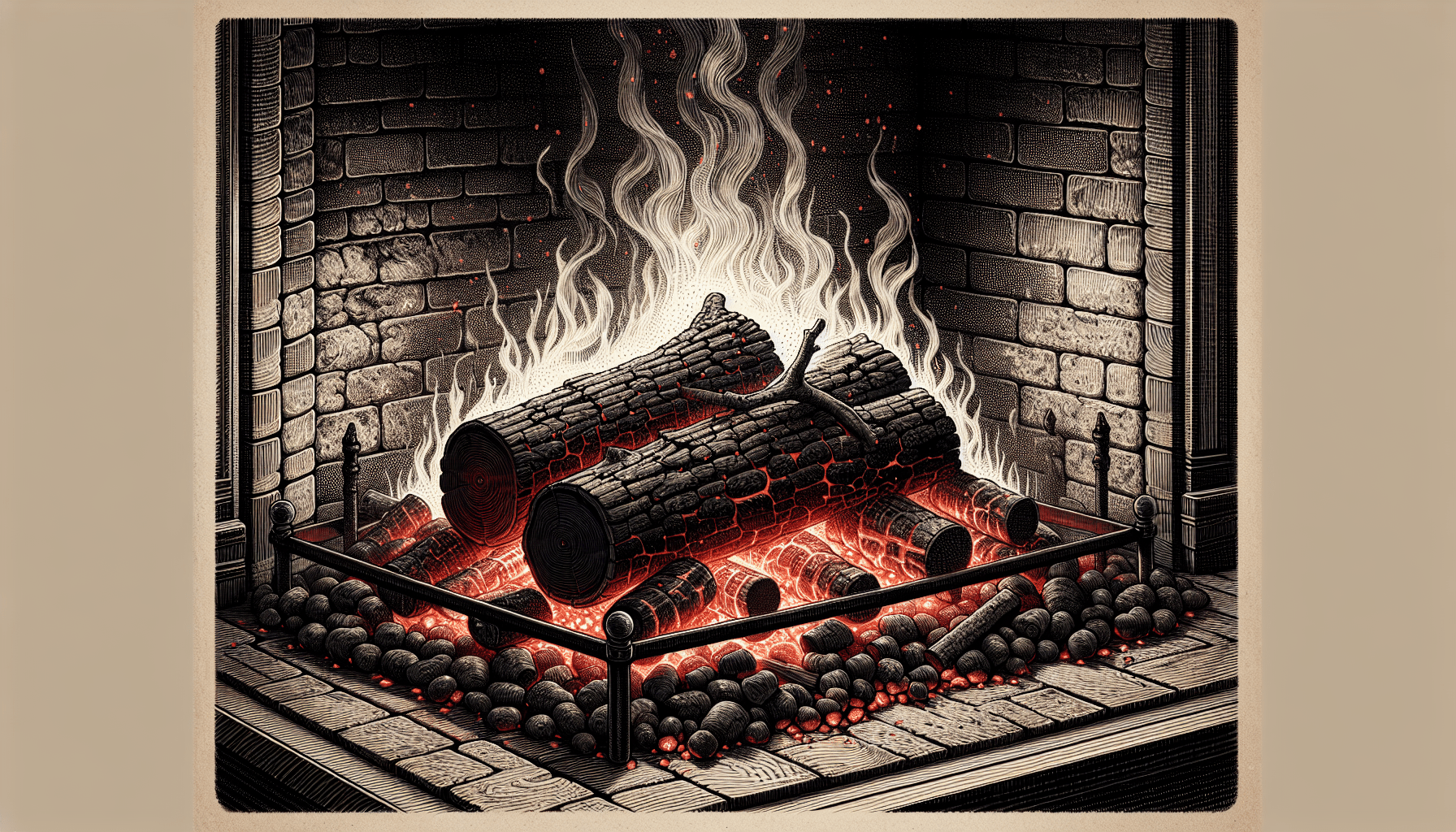Why is wood not burning properly? It’s a question I asked myself while staring at the stubborn logs in my fireplace. In this article, I’ll unravel the mysteries behind why your wood might not be catching fire as you expect. From understanding the importance of moisture content to recognizing the type of wood you’re using, I’ll guide you through practical tips to ensure your next fire burns brightly and efficiently. Get ready to transform your fire-starting skills from frustrating to flawless. Why is wood not burning properly? Have you ever found yourself staring in frustration at a stubborn fire that refuses to ignite, thinking to yourself, “What am I doing wrong?” Trust me, I’ve been there, wondering why a seemingly simple task can turn into a monumental challenge.
Let’s dive into the problem and figure out why that wood might not be burning properly.
Different Types of Wood
First things first, not all wood is created equal. Different types of wood have different burning properties. The kind of wood you’re using can make a big difference.
Hardwood vs. Softwood
I know it sounds like something out of a fairy tale, but there actually is a significant difference between hardwoods and softwoods when it comes to burning them. Hardwoods, like oak or hickory, usually burn longer and produce more heat. Softwoods, such as pine and spruce, tend to ignite quickly but burn out faster.
| Type of Wood | Burns Faster | Burns Longer | Produces More Heat |
|---|---|---|---|
| Hardwood | No | Yes | Yes |
| Softwood | Yes | No | No |
I remember once trying to impress some friends with a blaze made entirely of pine logs. It was roaring for about ten minutes, and then, poof! I was left with nothing but a pile of quickly dying embers. If you want a fire that lasts, you’re going to need some good, seasoned hardwood.
Green Wood vs. Seasoned Wood
Now, this is an area that many people, myself included, often overlook. Green wood, which is freshly cut, contains a lot of moisture, and that’s not good news for your fire. Seasoned wood has been allowed to dry out, which makes it much easier to burn.
| Type of Wood | Moisture Content | Burns Easily | Produces Smoke |
|---|---|---|---|
| Green Wood | High | No | Yes |
| Seasoned Wood | Low | Yes | No |
I once tried to burn some green wood I found lying around my yard. It hissed and sizzled and produced enough smoke to signal passing airplanes, but produced very little heat. Lesson learned: give it time to dry out!
Moisture Content
Speaking of moisture, let’s get a bit more into why moisture content in wood is so important.
Measuring Moisture Content
One way you can measure the moisture content in your wood is by using a moisture meter. These gizmos aren’t that expensive and can save you a lot of hassle. But let’s be honest, not everyone has a moisture meter lying around. So, how can you tell if your wood is too wet?
Signs Your Wood is Too Wet
If you don’t have a moisture meter, you can still tell if your wood is too wet by observing the following signs:
- Feel: Wet wood will feel colder and heavier than dry wood.
- Sound: Green or wet wood will make a dull thud when struck against another piece, while dry wood will produce a clear, sharp sound.
- Sizzle: If you hear a lot of sizzling and see water bubbling out of the ends of the logs, your wood is definitely too wet.
I remember the first time I noticed the sizzling; I thought I had a great fire going until someone pointed out that it sounded more like bacon frying than wood burning.

Proper Airflow
Even if you have the perfect wood, your fire still needs oxygen to survive. It’s surprisingly easy to underestimate the importance of good airflow.
Setting Up Your Fire Properly
How you stack your wood can make or break your fire, literally. A proper fire setup allows for good airflow, which is crucial for combustion.
Here’s a basic method I’ve found useful:
- Tinder: Start with small, dry materials like newspaper or dry leaves.
- Kindling: Place small sticks and twigs on top.
- Logs: Place larger logs in a criss-cross or teepee formation.
Importance of Ventilation
If you’re using a fireplace or wood stove, proper ventilation is critical. Make sure the chimney is clean and free of obstructions. Sometimes, despite your best efforts, the problem lies in the chimney.
I once spent hours troubleshooting a fire that wouldn’t stay lit, only to discover there was an old bird’s nest in the chimney blocking the airflow. Needless to say, no amount of perfectly stacked wood could’ve helped me then.
External Factors
Sometimes, the issue isn’t the wood, moisture, or airflow. External factors can play a significant role in whether or not your fire burns properly.
Weather Conditions
Certain weather conditions can significantly affect your fire. High humidity, rain, and even barometric pressure can make it more challenging to get a good burn going.
- Rain: No surprises here. Wet conditions generally mean wet wood.
- Humidity: Even if your wood appears dry, high humidity can deter combustion.
- Wind: A gentle breeze can help your fire, but strong winds can either blow it out or spread embers, which is dangerous.
Altitude
If you’re up in the mountains, you might have noticed it’s harder to get a fire going. This is due to the lower oxygen levels at higher altitudes. You’ll need to take extra precautions to ensure adequate airflow.
I went camping at a high altitude once and spent a good two hours trying to get a fire going, before realizing I had to give my fire even more room to breathe.

Firewood Storage
Proper wood storage is something that often gets overlooked but is crucial for combustion.
How to Store Firewood
Store your firewood off the ground to avoid moisture absorption. You can use a pallet or some other form of raised platform. Make sure it’s covered but also allow for airflow. A tarp that extends over the top but leaves the sides open works well.
Stack your wood in a manner that allows for air circulation, avoiding tight piles. If you stack it too closely, it can trap moisture and make it difficult to dry.
I once thought just piling all my wood in one big stack would do the trick. Nope. The outer logs were fine, but those inside were soggy and useless.
Seasoning Time
Seasoning time varies depending on the type of wood and the conditions it’s stored under. Generally, wood can take anywhere from six months to a year to properly season. Hardwoods might take even longer.
| Type of Wood | Seasoning Time |
|---|---|
| Hardwood | 1-2 years |
| Softwood | 6 months – 1 year |
| Green Wood | Up to 2 years |
Troubleshooting
Sometimes, despite your best efforts, you still can’t get that fire going. Here are some additional troubleshooting tips:
Problem: Fire Won’t Start
Solution: Double-check your tinder and kindling. Make sure they are dry and arranged correctly for optimal airflow. Also, ensure that you’re using seasoned wood.
Problem: Fire Produces Too Much Smoke
Solution: Excessive smoke often indicates wet wood or poor ventilation. Recheck the moisture content and ensure your setup allows for maximum airflow.
Problem: Fire Burns Quickly, Then Dies
Solution: This is often due to using too much softwood or inadequate logs. Ensure you have a balanced mix of tinder, kindling, and logs to maintain a steady burn.
Problem: Fire Keeps Going Out
Solution: Check the external factors such as weather and wind. Ensure your fire setup allows for adequate oxygen supply and consider adjusting the wood arrangement for better airflow.
Safety Precautions
I can’t stress this enough: always prioritize safety when dealing with fire.
Keep a Fire Extinguisher Handy
Whether you’re inside or outside, always have a fire extinguisher or a bucket of water nearby. Fires can be unpredictable, and it’s better to be safe than sorry.
Proper Disposal of Ashes
Once your fire is out, ensure the ashes are completely cool before disposing of them. Ash can stay hot for a surprisingly long time and reignite if not handled properly.
Maintain a Safe Perimeter
Make sure there’s a safe distance around your fire, especially if you’re outdoors. Clear the area of flammable materials like leaves and twigs.
I’ll never forget the time I almost set my backyard on fire because I neglected to clear a safe perimeter around my fire pit. That was a close call, and I’ve been extra careful ever since.
Conclusion
So, why is your wood not burning properly? As we’ve seen, there could be numerous reasons, from the type of wood you’re using and its moisture content to external factors like weather and airflow. It’s a lot to consider, I know, but once you get the hang of it, you’ll be a fire-starting pro in no time.
Whether you’re trying to roast marshmallows on a camping trip or heat your home on a cold winter night, understanding the principles of burning wood will make your life a whole lot easier. Happy burning!

